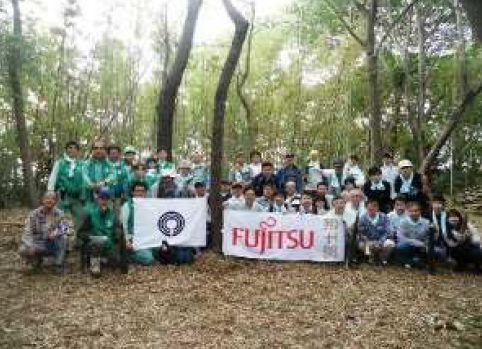Archived content
NOTE: this is an archived page and the content is likely to be out of date.
Conservation Activities at Kuriki Sannoyama Special Conservation Area
Background of Activities
In 2012, the Fujitsu Kawasaki Research & Manufacturing Facilities initiated activities for conservation of green space in the Kuriki Sannoyama Special Conservation Area, which is one of the special conservation areas in the city of Kawasaki. In 2013, it concluded an agreement (automatically renewed) with Kawasaki on activities for the conservation and management of local woodland areas. In this connection, it also prepared the Kuriki Sannouyama Special Conservation Area Conservation Management Plan in collaboration with Kawasaki. In accordance with this plan, we have promoted activities for the conservation of green tracts, toward the rebirth of tracts that had been in a state of desolation as quality woodland areas. We are striving to raise the awareness of our employees through their participation in the related activities.
〈What is the Kuriki Sannoyama Special Conservation Area?〉
- An area designated by Kawasaki City under the Urban Green Space Conservation Law to act as a permanent conservation area as a habitat for animals and plants, offering excellent scenic beauty and views.
- Located in Kuriki, Asao-ku, Kawasaki City, it is a green area of about 2 hectares spreading from the ridge of the city border with Machida City on a sloping surface.
Activity Area
The activity area is roughly divided into three areas.
- Area A: Mixed forest of trees such as Quercus acutissima and Quercus serrata. Plants such as Pleioblastus chino grow on the forest floor. We aim to create a healthy mixed forest where various animals and plants can live and grow by cutting the undergrowth.
- Area B: A bamboo forest mainly comprising Japanese timber bamboo. We aim to create a bright mixed forest where various animals and plants can live and grow by cutting down the bamboo groves and leaving the seedling trees.
- Area C: A bamboo forest mainly comprising Japanese timber bamboo. Cut the bamboo forest and create various environments by planting fruit trees and flowering trees, etc.
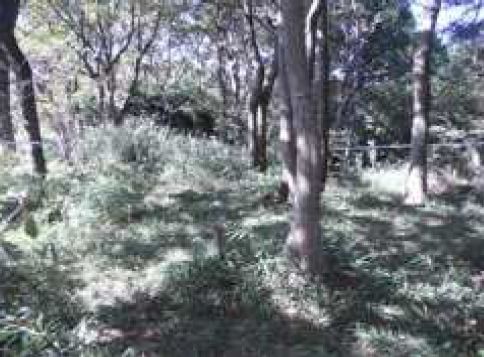
Area A
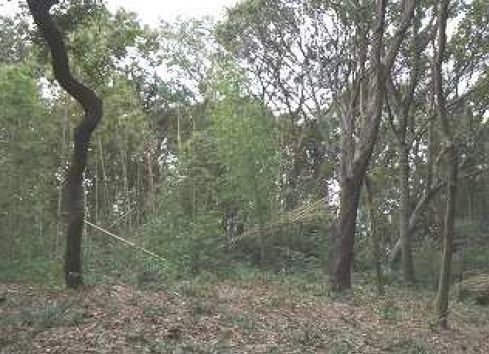
Area B
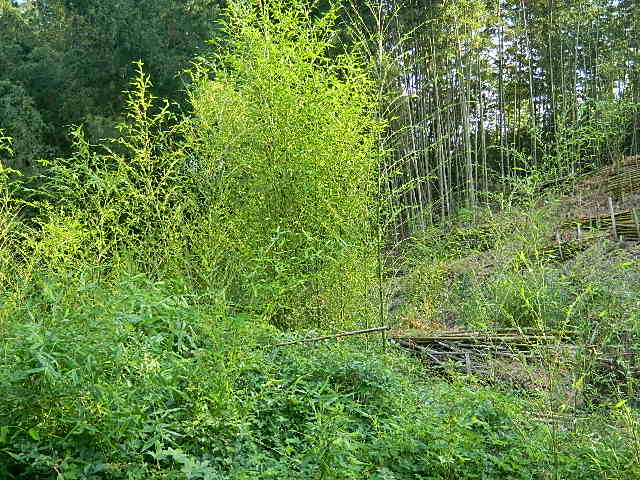
Area C
Content of Activities
Prior to the start of activities from 2012, each area had ceased to be used as a mixed forest, bamboo species had invaded the mixed forest, and the areas were in a devastated state. Therefore, we carried out the following activities and aimed to regenerate the local woodlands.
- Employees participated in each area two to three times a year to carry out cutting of bamboo and undergrowth, and in 2015 they made nest boxes from the Japanese timber bamboo which had been cut and installed them on trees.
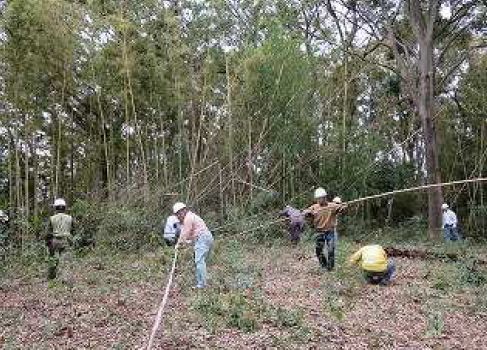
Bamboo grove cutting work
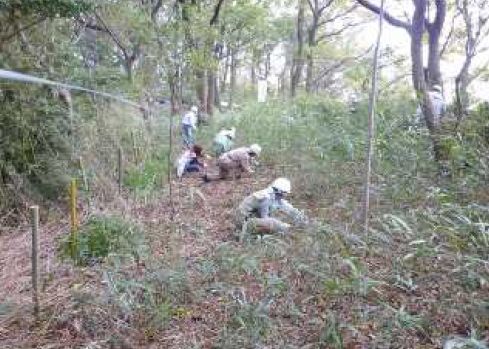
Undergrowth cutting work
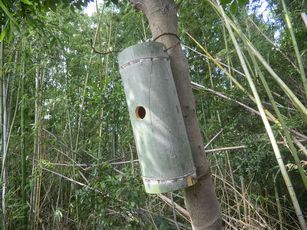
Installed nest boxes made from bamboo
The continued sweat and efforts of our employees seem to be helping the nature of the local woodlands return.
